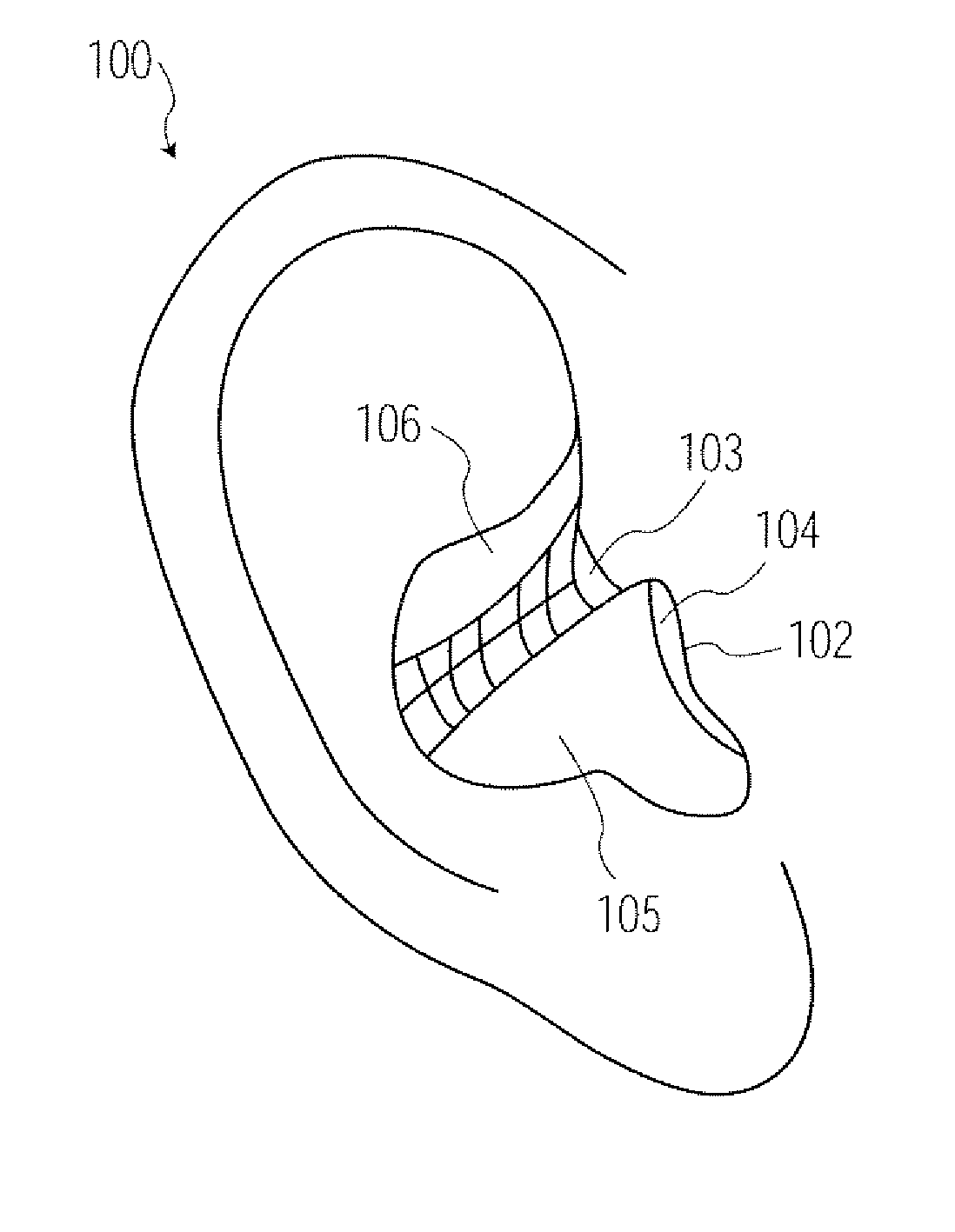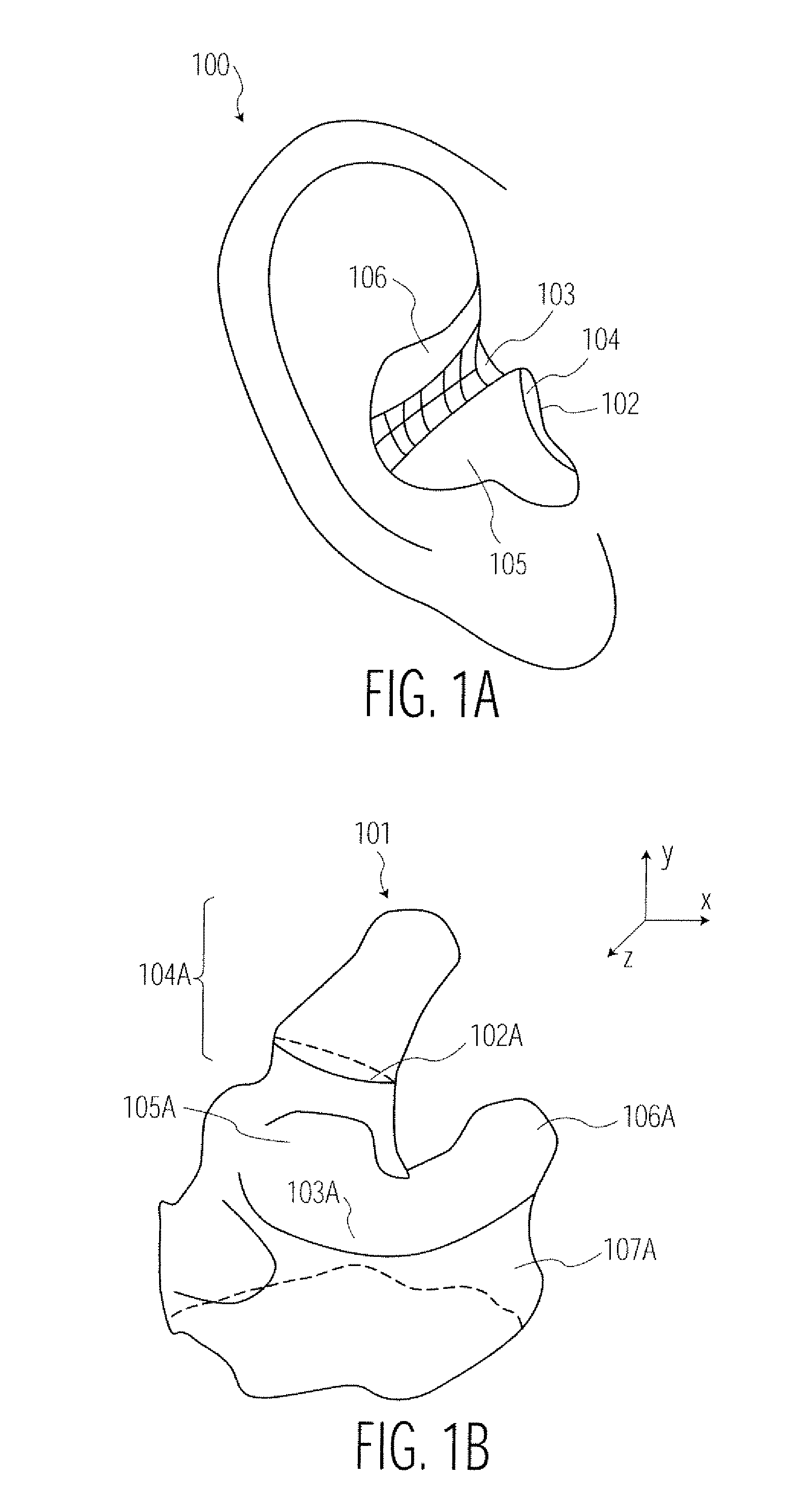Method and Apparatus for Aperture Detection of 3D Hearing Aid Shells
a technology of aperture detection and hearing aid shell, which is applied in the field of three-dimensional object feature extraction, can solve problems such as disadvantages in some aspects, and achieve the effect of reducing tim
- Summary
- Abstract
- Description
- Claims
- Application Information
AI Technical Summary
Benefits of technology
Problems solved by technology
Method used
Image
Examples
Embodiment Construction
[0021] The present inventors have recognized that it is desirable to use registration techniques to align two ear impressions with each other, for example the ear impressions of both ears of a patient, in order to improve the design process of hearing aid shells. Registration of two different surfaces is a fundamental task with numerous potential applications in various fields. As is well known and as used herein, registration is generally defined as the alignment of two surfaces through the use of various three-dimensional transformation techniques, such as, for example, three dimensional surface rotation and translation. Registration typically involves aligning two shapes in such a way as to allow the comparison of the shapes to, for example, identify similarities and differences between those shapes. While such registration is a fundamental technique and can be very useful, the registration of two complex three-dimensional (3D) shapes, such as shapes formed by ear impressions use...
PUM
 Login to View More
Login to View More Abstract
Description
Claims
Application Information
 Login to View More
Login to View More - R&D
- Intellectual Property
- Life Sciences
- Materials
- Tech Scout
- Unparalleled Data Quality
- Higher Quality Content
- 60% Fewer Hallucinations
Browse by: Latest US Patents, China's latest patents, Technical Efficacy Thesaurus, Application Domain, Technology Topic, Popular Technical Reports.
© 2025 PatSnap. All rights reserved.Legal|Privacy policy|Modern Slavery Act Transparency Statement|Sitemap|About US| Contact US: help@patsnap.com



